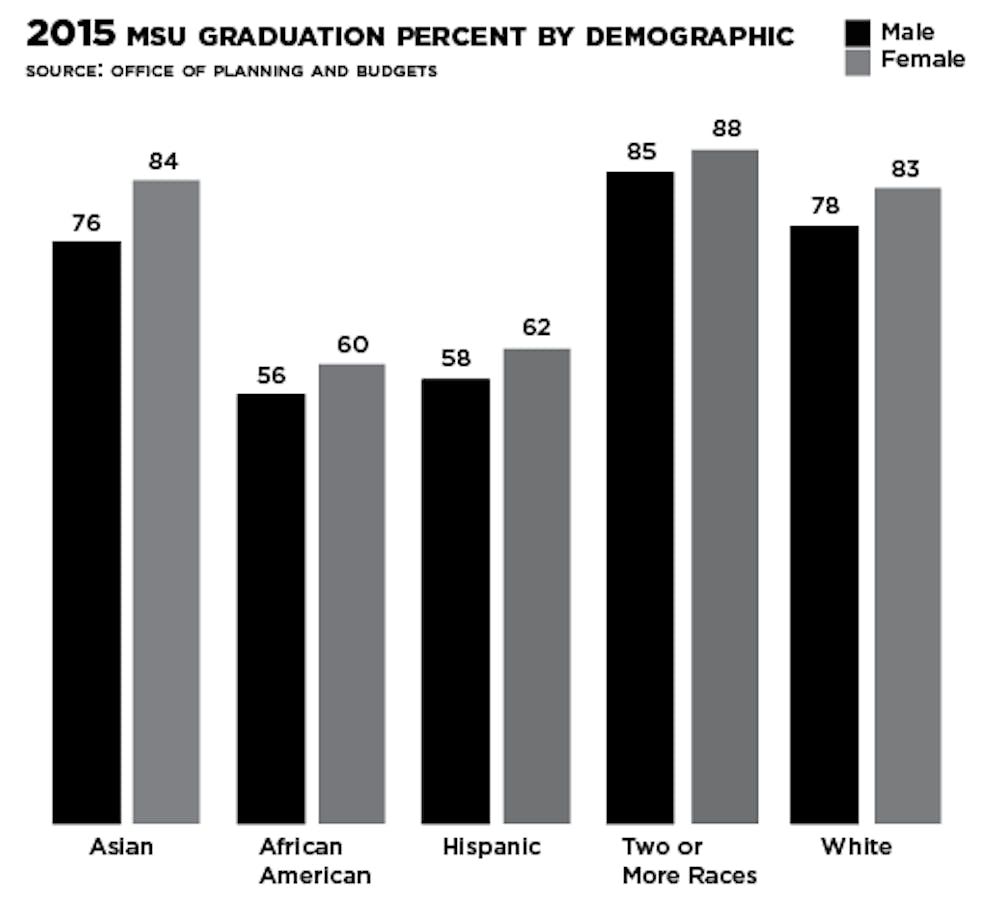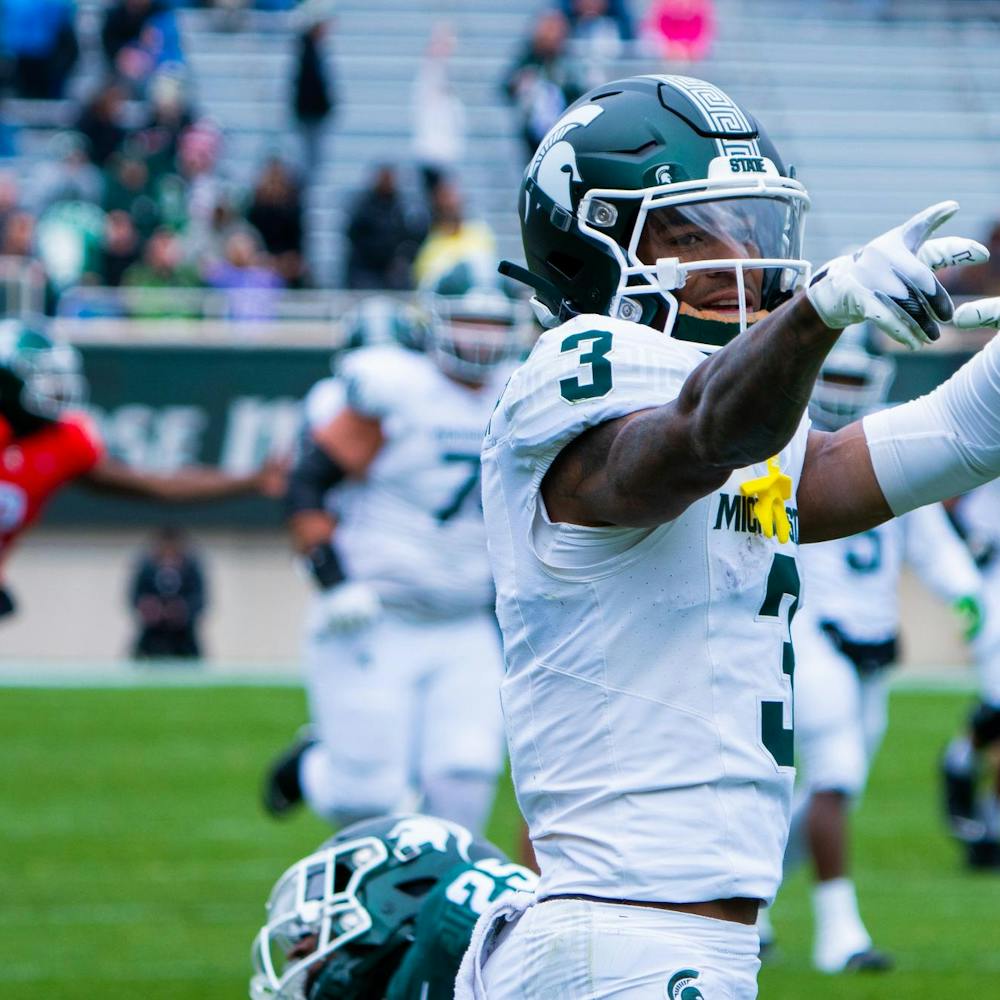With another school year near its end, a new class of students are about to graduate and continue on into the professional world. Every year, the Office of Planning and Budgets conducts surveys of the MSU student population to ascertain how certain demographics of students are doing and dividing it further between male and female categories.
Since these surveys have to happen at the end of the year, naturally the data isn’t compiled until after the current class has moved on. Still, when looking at the data from 2009 up to the most recent year of 2015, trends begin to emerge.
The first noticeable one is that women overall tend to have a higher graduation rate than their male counterparts. This applies within nearly all demographic categories as well.
New categories were introduced in 2011, namely separating Asian into two distinct groups — Asians from east and southeast Asia and Native Hawaiian/Pacific Islanders. The category of two or more races was added in the same year as well.
Among student athletes, women hold a significant lead over male athletes. Only in 2012 were the graduation rates close between the two, with 74 percent for women and 72 percent for men.
Graduation rates were higher for both Asian demographics, non-Hispanic whites, two or more races and non-resident aliens. Non-Hispanic black and Hispanic students had some of the lower graduation rates overall.
Data like this is used by the university in a number of different capacities. Douglas Estry, the associate provost for undergraduate education and dean of undergraduate studies, utilizes this data to monitor graduation rate, persistence or how well a student does from fall to spring semester and year-to-year and time to degree in years.
“Those are very big indicators of our success at moving students through their undergraduate degrees,” Estry said. “We then look at whether or not there are current policy issues, or policy statements, that could positively impact persistence. We also look at programatic initiatives that we think could positively impact that.”
Estry acknowledged there are always particular groups of students who face the most difficulty in achieving graduation — first-generation college students and students who come from lower performing high schools are two obvious cases. A new 10-year long initiative known as the Student Success Dashboard is slated to launch this fall, gathering student data from neighborhood engagement centers, certain colleges and other academic units.
The hope is that this new study, along with the other academic programs at MSU, “will really begin to show the kind of very positive, incremental increases that we would like to see,” Estry said.
Salim Lancaster, a first-generation black college student and food industry management senior, is a prime example of the target demographic that these programs are meant to help assist in graduating.
For Lancaster, the pressure to graduate not only comes from within himself, but also from a number of peers and even his family.
“It was like so much weight on my shoulders because everyone was expecting me to be great, to reach a certain potential,” he said. “It wasn’t until my sophomore year when I came to the conclusion that this is what I wanted, that I needed to succeed and graduate because this was for me.”
In spite of his hurdles, Lancaster confessed to not utilizing more of MSU’s various academic assistance programs, a decision that he regrets but takes a certain amount of pride in for succeeding on his own.
“I didn’t do it, and I feel bad for not doing it and I think, ‘ah I messed up, I should have done this, I should have done that,’” Lancaster said. “Now I’m sharing with other students, my fraternity brothers, and I tell them to take advantage of it and to go talk to this or that person to help them out.”







